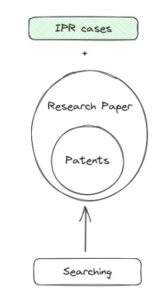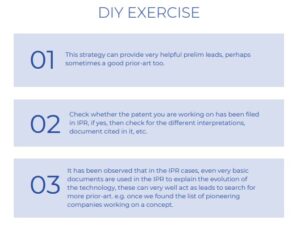Introduction
Examiner search can assist in finding prior art for patents in a number of ways. First, it can help to identify patents that are relevant to the invention being examined.
Second, it can help to identify other sources of prior art that may not be found in patent databases. Third, it can lead you to the areas from which the prior art has not been cited in the patent application.
This also leads you to evaluate which directions are yet to be explored. In addition to the above IPR petitions can be explored for more details id IPR was filed earlier.
An inter partes review (IPR) is a type of administrative trial proceeding conducted before the Patent Trial and Appeal Board (PTAB) of the United States Patent and Trademark Office (USPTO). IPR petitions can be filed by any person who is not the owner of a patent, and who believes that one or more claims of the patent are invalid.
To file an IPR petition, the petitioner must identify the patent that they are challenging, and the claims that they believe are invalid. The petitioner must also provide evidence that the claims are invalid, such as prior art that renders the claims obvious.
IPR petitions can be a valuable source of information for anyone who is interested in the validity of a patent. The petition itself will typically include the following information:
- The patent that is being challenged: The petition will identify the patent that is being challenged, including the patent number and the date of issuance.
- The claims that are being challenged: The petition will identify the claims that are being challenged, and will provide a brief explanation of why the petitioner believes that the claims are invalid.
Get Leads From The Existing Search Details

- The prior art that is being relied upon: The petition will identify the prior art that is being relied upon to invalidate the claims. This prior art can include patents, publications, and other documents.
- The petitioner’s arguments: The petition will set forth the petitioner’s arguments as to why the claims are invalid. These arguments will typically be based on the prior art that is being relied upon.
For example – We were finding a result related to patent disclosing a “cough collecting” apparatus. While checking the IPR petition, we observed that some of the results were given from social media sites. Here we followed the same lead and got killer prior-art on Facebook

Unlock endless knowledge and expand your reading horizons with Amazon – the ultimate destination for books that will captivate your mind and immerse you in relatable content like never before….
Leave a Reply